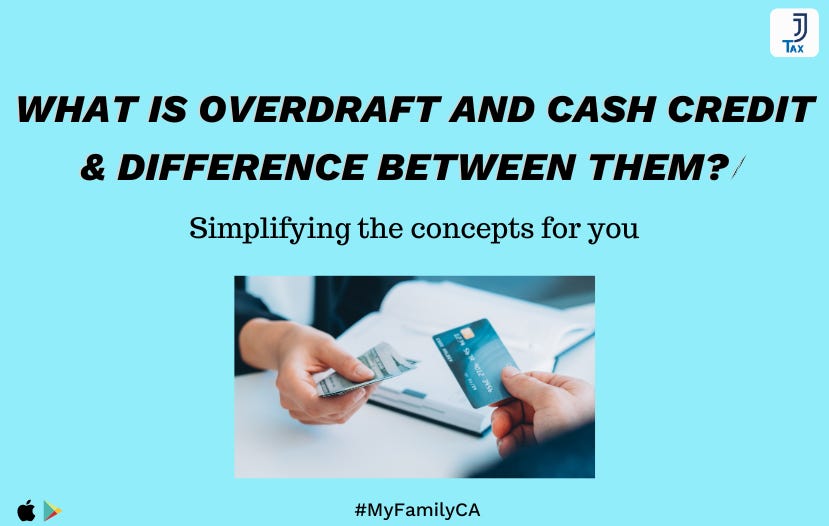Simplifying the concepts for you💫

A Cash Credit (CC) is a type of short-term finance for a business. In other words, a cash credit is a short-term loan made by a bank to a business. It allows a business to withdraw funds from a bank account without maintaining a credit balance. The account can only borrow up to the borrowing limit. Furthermore, interest is levied on the amount borrowed rather than the borrowing limit.
An overdraft allows you to borrow money through your current account by drawing out more money than there is in the account - in other words, you go "overdrawn". There is normally a fee for this.
You can request an overdraft from your bank, or they may simply grant you one, but keep in mind that an overdraft is a form of loan. If you want to borrow money, there may be less expensive options. It is critical to always look for the cheapest way to borrow.
Authorised overdrafts: Because they are pre-arranged, they are often known as 'arranged' overdrafts. You and your bank agree on a limit and can spend money up to that limit.
Unauthorised overdrafts: also known as 'unplanned' or 'unarranged' overdrafts, occur when you expend more than you have in your bank account without first agreeing to it. This includes exceeding an authorised overdraft limit.
Cash credit: A cash credit borrowing facility can help businesses achieve their working capital requirements.
Overdraft: Overdraft facilities can be used by individuals and corporations to meet short-term financial obligations.
Overdraft: Only the amount consumed is used to calculate interest.
Cash credit: You must open a new bank account.
Overdraft: You may use your current bank account.
Cash credit: You have the option of withdrawing up to 60% of the value of your receipts and inventory.
Overdraft: The withdrawal limit will be set by the lender.
Cash credit: Dependent on the quantity and worth of the inventory
Overdraft: Unchangeable
Cash credit: This is only available to businesses.
Overdraft: This service is offered to both corporations and individuals.
It all hinges on why you require the money and what your business objectives are. If your credit score is low, and you want to enhance it or repay loans on time to keep your business afloat in the long run, consider using your lender's overdraft facility.
However, if your financial requirements are merely short-term, such as arranging for working capital, cash credit is a better solution.
Understanding the distinction between OD and CC is critical when determining which credit facility is best for your company. Both have distinct advantages, but you must analyse your company's demands and financial goals before making a decision.

